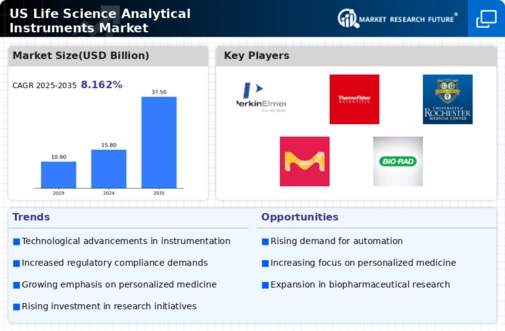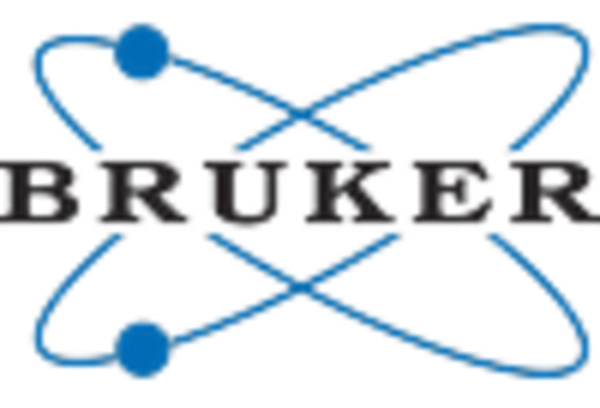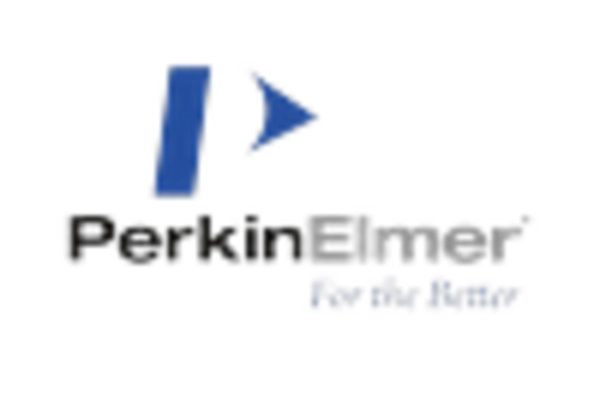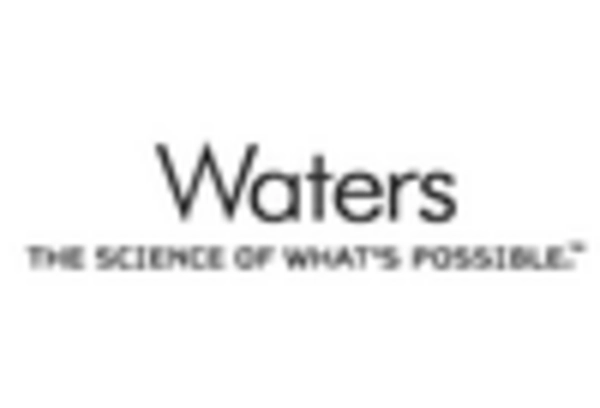The life science-analytical-instruments market is characterized by a dynamic competitive landscape, driven by innovation, technological advancements, and increasing demand for precision in research and diagnostics. Major players such as Thermo Fisher Scientific (US), Agilent Technologies (US), and Waters Corporation (US) are at the forefront, each adopting distinct strategies to enhance their market positioning. Thermo Fisher Scientific (US) emphasizes innovation through substantial investments in R&D, focusing on developing cutting-edge analytical instruments that cater to diverse applications in life sciences. Meanwhile, Agilent Technologies (US) has been actively pursuing strategic partnerships to bolster its product offerings and expand its market reach, particularly in the biopharmaceutical sector. Waters Corporation (US) is also notable for its commitment to digital transformation, integrating advanced data analytics into its instruments to improve user experience and operational efficiency.
The business tactics employed by these companies reflect a concerted effort to optimize supply chains and localize manufacturing processes, thereby enhancing responsiveness to market demands. The competitive structure of the market appears moderately fragmented, with a mix of established players and emerging companies vying for market share. This fragmentation is indicative of the diverse needs within the life sciences sector, which necessitates tailored solutions and specialized instruments.
In September 2025, Thermo Fisher Scientific (US) announced the launch of a new line of mass spectrometry systems designed to enhance the accuracy and speed of drug discovery processes. This strategic move is likely to solidify its leadership position in the market, as it addresses the growing demand for rapid and reliable analytical solutions in pharmaceutical research. The introduction of these advanced systems may also attract new clientele, further expanding Thermo Fisher's market footprint.
In August 2025, Agilent Technologies (US) entered into a collaboration with a leading biopharmaceutical company to develop innovative analytical solutions for biologics characterization. This partnership underscores Agilent's strategy to leverage external expertise and resources, potentially accelerating the development of next-generation analytical instruments. Such collaborations may enhance Agilent's competitive edge by enabling it to offer more comprehensive solutions tailored to the evolving needs of the biopharmaceutical industry.
In October 2025, Waters Corporation (US) unveiled a new software platform that integrates artificial intelligence capabilities into its analytical instruments. This development is indicative of the company's commitment to digitalization, aiming to provide users with enhanced data interpretation and decision-making tools. By incorporating AI, Waters Corporation is likely to differentiate itself in a crowded market, appealing to customers seeking advanced technological solutions.
As of November 2025, the competitive trends within the life science-analytical-instruments market are increasingly defined by digitalization, sustainability, and the integration of AI technologies. Strategic alliances are playing a pivotal role in shaping the landscape, as companies seek to combine strengths and resources to innovate more effectively. Looking ahead, it appears that competitive differentiation will increasingly pivot from price-based strategies to a focus on innovation, technological advancements, and the reliability of supply chains. This shift may redefine how companies position themselves in the market, emphasizing the importance of adaptability and forward-thinking in a rapidly evolving industry.

















Leave a Comment